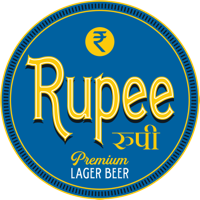What’s the Difference Between Chicken Tikka Masala & Butter Chicken?

Indian food has become one of the fastest-growing segments of the ethnic food scene in recent years. More people from around the globe have had some sort of exposure to the cuisine known for its diverse range of ingredients, tongue-tickling flavors, health benefits, and levels of spiciness.
From London to Dubai, Bangkok to LA, you can find an Indian restaurant just about anywhere these days. Next time you are at your local Indian restaurant, be sure to ask for Rupee Beer, Named the Best Beer For World Food, specially crafted to pair with Indian, spicy, and world cuisine.
With variety and immense diversity across India, the food offered in various regions across the country changes. Two menu items, which are often viewed as two of the most recognizable Indian entrees overseas, still to this day cause a lot of confusion among fans of Indian cuisine.
Chicken Tikka Masala and Butter Chicken are two well-known entrees that taste delicious. However, they remain very similar in several ways when it comes to taste, presentation, and appeal.
So, what is the main difference between both of these creamy and iconic Indian entrees?
Butter Chicken or most commonly known as Murgh Makhani in India is the brainchild of Hindu-Punjabi restaurateurs Kundan Lal Gujral, Thakur Dass, and Kundan Lal Jaggi, founders of the famous Delhi restaurant Moti Mahal in 1948.
Opening one year after India gained independence from the British, Moti Mahal became an icon across the Indian capital, attracting high-profile visits from heads of state, including India’s first Prime Minister and former Soviet & Pakistani Prime Ministers.
Made of juicy and tender pieces of tandoori chicken marinated in ginger, garlic and spices, the meat is sauteed into a rich tomato and cream gravy with an assortment of spices, tomato paste, yogurt and onions. The Punjabi restaurateurs came up with the idea for butter chicken to save cooked chicken from drying out.
Chicken Tikka Masala finds its rise to fame across the western world in a different corner of the globe. Now, the national dish of the United Kingdom, Chicken Tikka Masala, may look and feel similar to its older brother, Butter Chicken, but its story is set thousands of miles away.
In the 1960s, many of Britain’s Indian restaurants and curry houses were operated by new arrivals from India, Bangladesh, and Pakistan. Reports state that the chicken tikka masala we have grown to love today originated at an Indian restaurant in Glasgow, Scotland, by chef Ali Ahmed Aslam.
Aslam was a Pakistani chef who came up with the idea of Chicken Tikka Masala after a customer complained his tandoori chicken seemed too dry and needed a sauce to accompany it. By preparing a sauce from spices, cream, yogurt, and tender pieces of chicken in the restaurant’s kitchen, CTM was born.
The main difference between these two mouth-watering dishes is that butter chicken has lesser tomato intensity, and chicken tikka masala is less creamy than butter chicken.
Though chicken tikka masala and butter chicken seem similar in both name and looks, they’re quite different, and there is always a competition between tikka masala and butter chicken. They are two completely different dishes with unique origin stories.
While both are creamy Indian entrees with chicken as their main ingredient, butter chicken typically has more cream added to it, whereas tikka masala tends to be on the spicier side.
This begs the age-old question: Butter chicken vs. tikka masala. Which of the two dishes is the undisputed champion of all curries? There’s no easy way to rank them, as they are both extraordinarily delicious and packed with Indian flavor in their own right. It all depends on your taste buds and level of spice tolerance and flavor.

